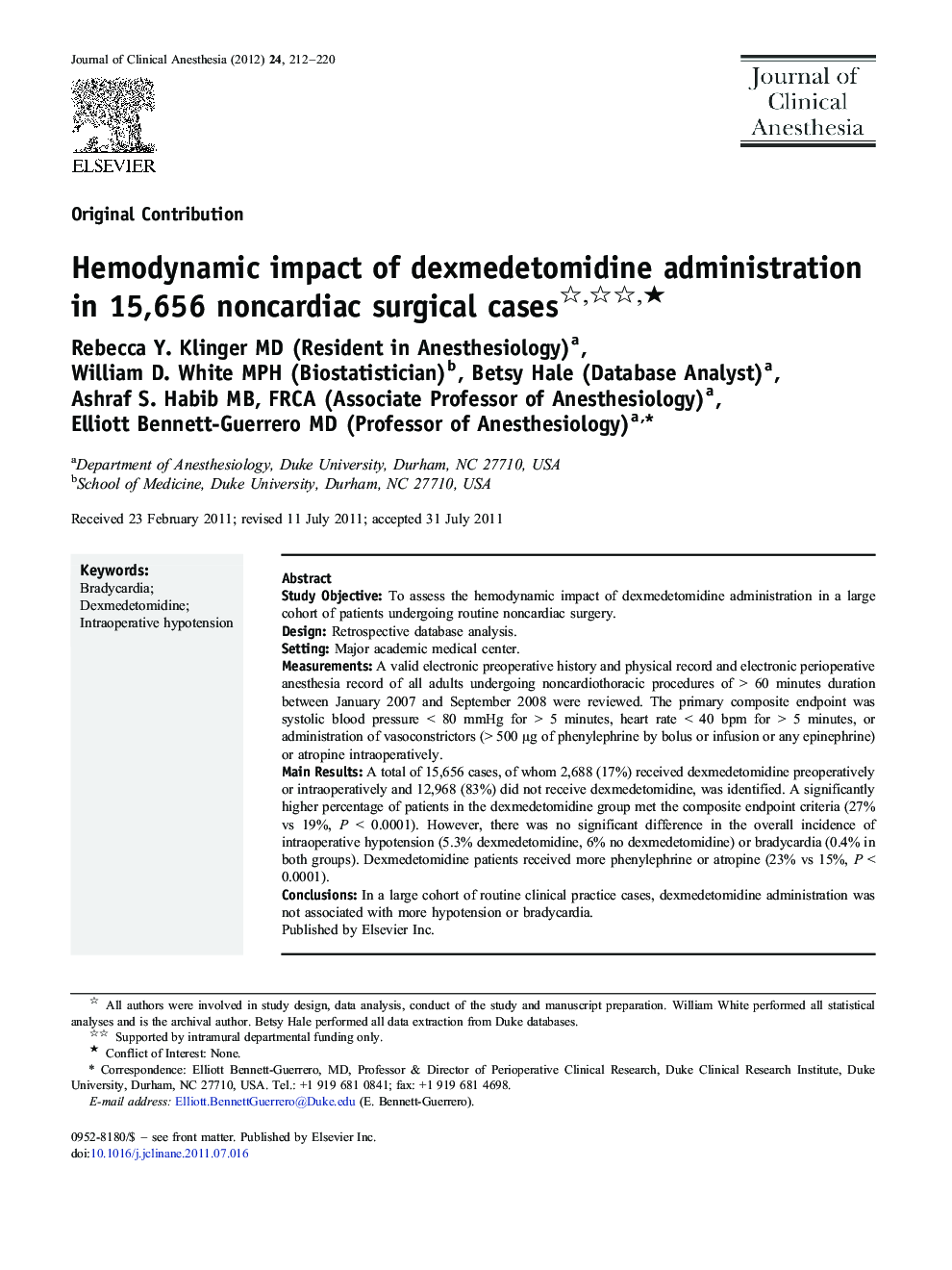| Article ID | Journal | Published Year | Pages | File Type |
|---|---|---|---|---|
| 2763207 | Journal of Clinical Anesthesia | 2012 | 9 Pages |
Study ObjectiveTo assess the hemodynamic impact of dexmedetomidine administration in a large cohort of patients undergoing routine noncardiac surgery.DesignRetrospective database analysis.SettingMajor academic medical center.MeasurementsA valid electronic preoperative history and physical record and electronic perioperative anesthesia record of all adults undergoing noncardiothoracic procedures of > 60 minutes duration between January 2007 and September 2008 were reviewed. The primary composite endpoint was systolic blood pressure < 80 mmHg for > 5 minutes, heart rate < 40 bpm for > 5 minutes, or administration of vasoconstrictors (> 500 μg of phenylephrine by bolus or infusion or any epinephrine) or atropine intraoperatively.Main ResultsA total of 15,656 cases, of whom 2,688 (17%) received dexmedetomidine preoperatively or intraoperatively and 12,968 (83%) did not receive dexmedetomidine, was identified. A significantly higher percentage of patients in the dexmedetomidine group met the composite endpoint criteria (27% vs 19%, P < 0.0001). However, there was no significant difference in the overall incidence of intraoperative hypotension (5.3% dexmedetomidine, 6% no dexmedetomidine) or bradycardia (0.4% in both groups). Dexmedetomidine patients received more phenylephrine or atropine (23% vs 15%, P < 0.0001).ConclusionsIn a large cohort of routine clinical practice cases, dexmedetomidine administration was not associated with more hypotension or bradycardia.
